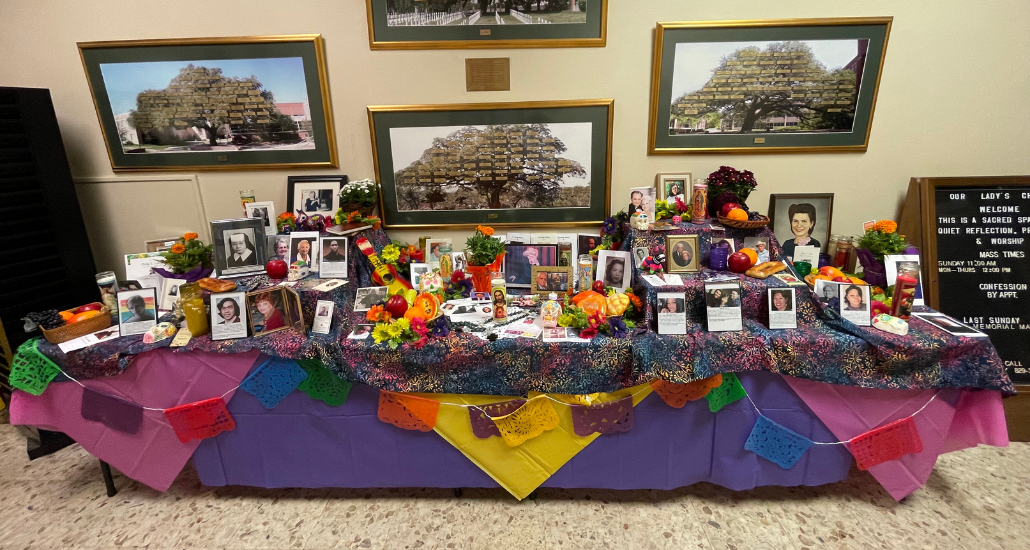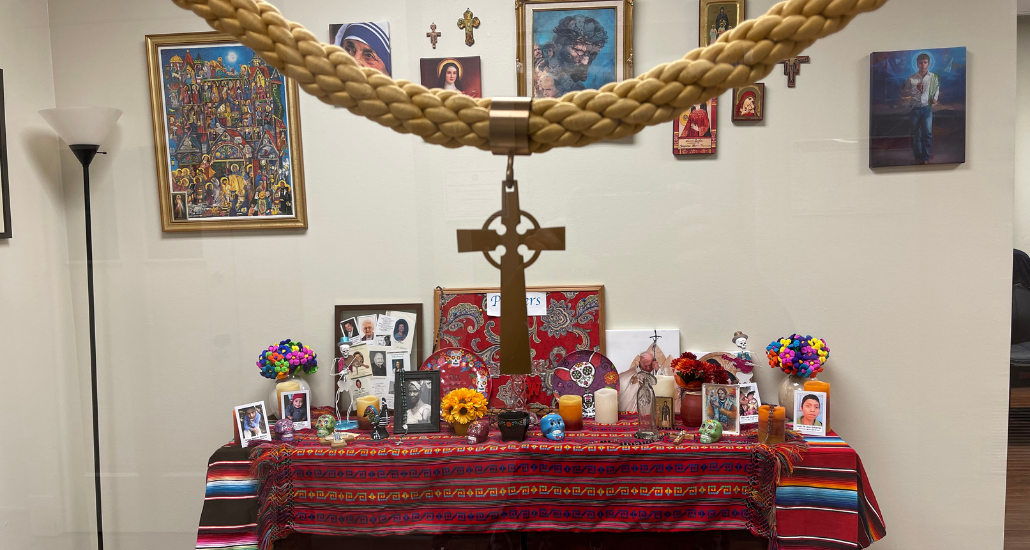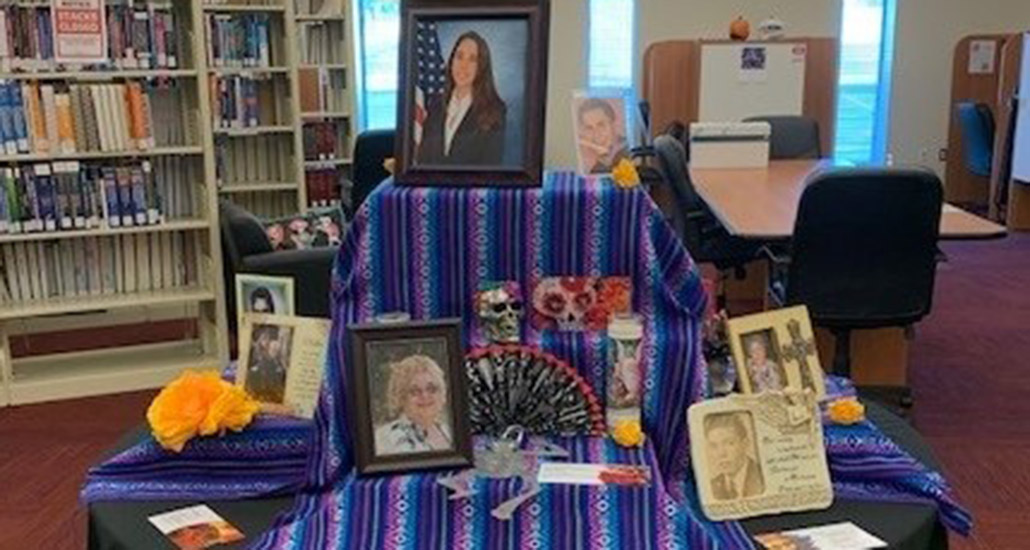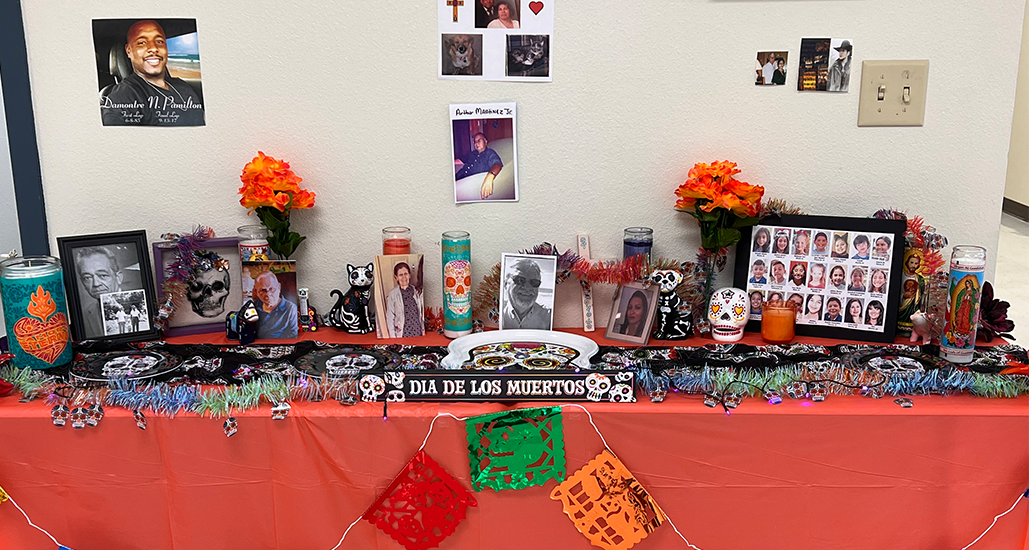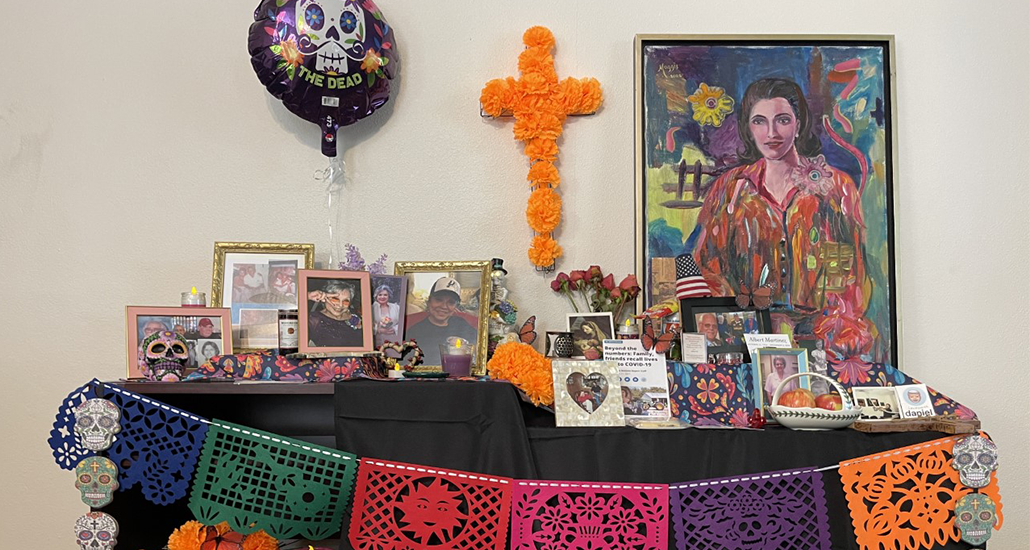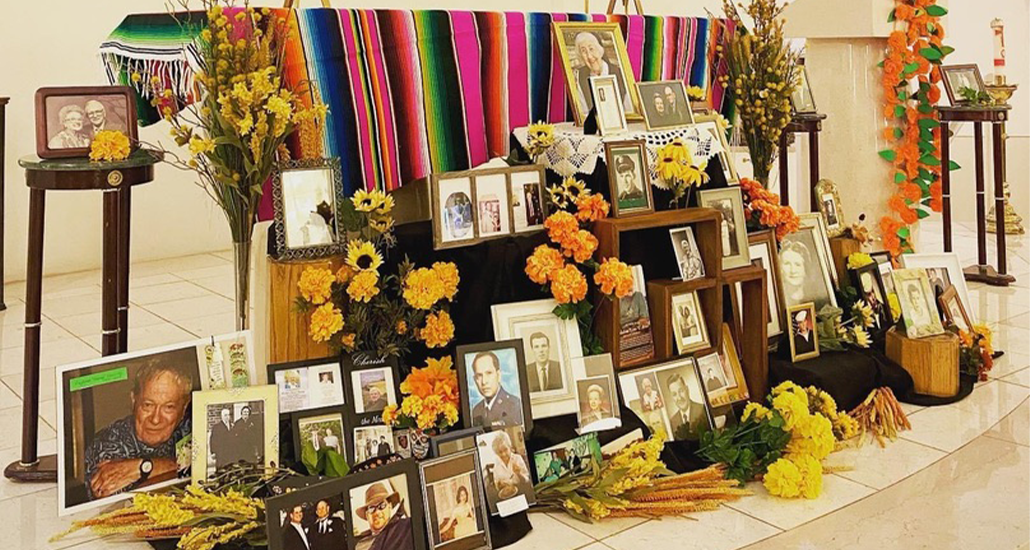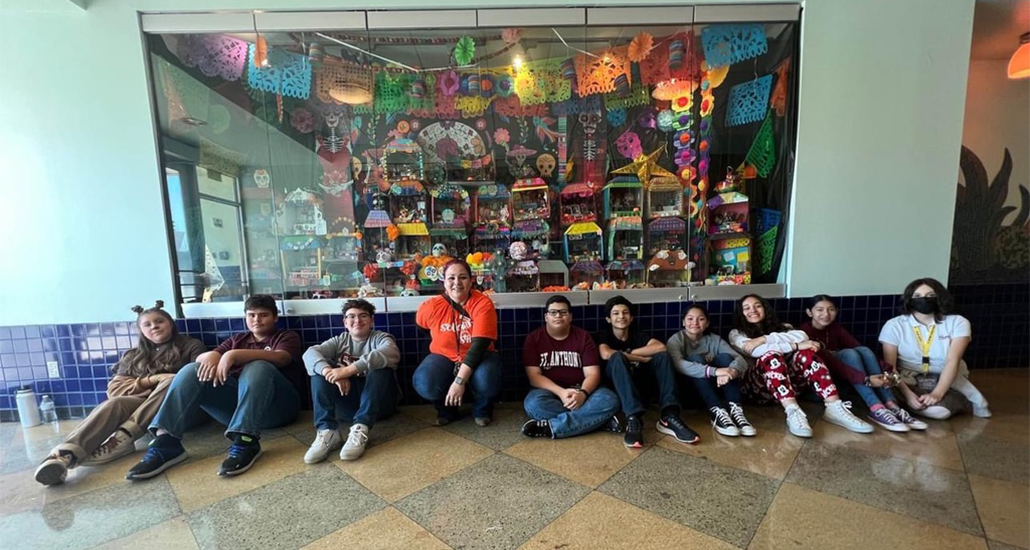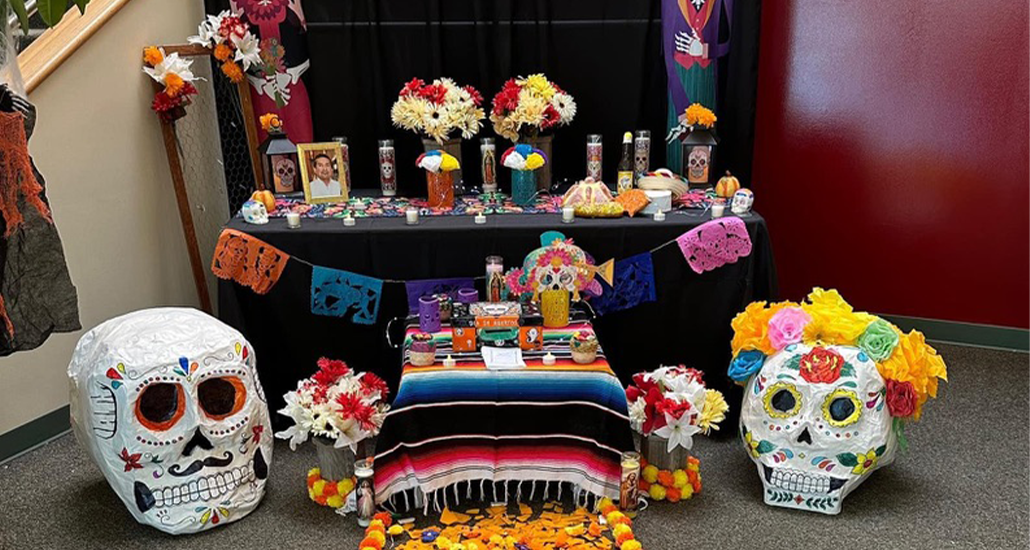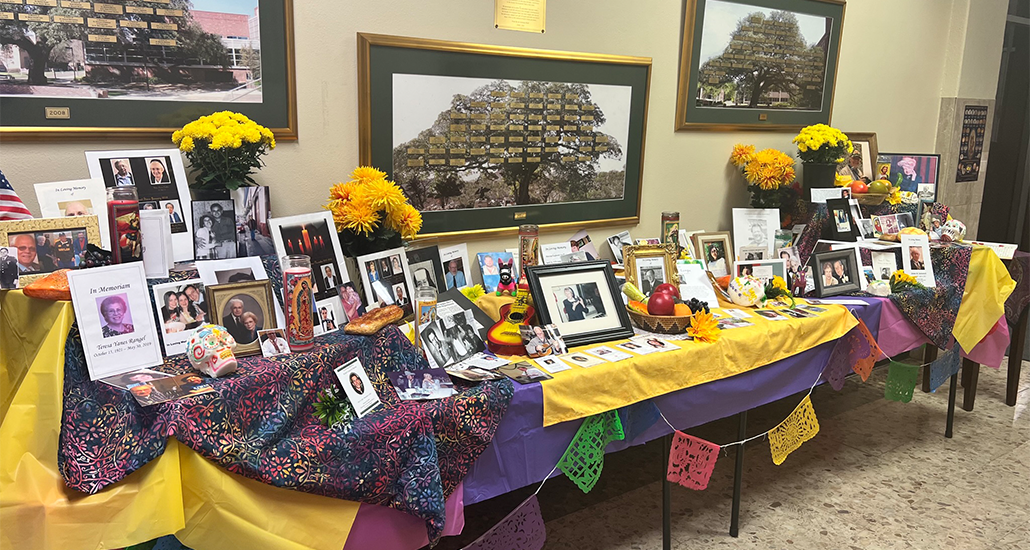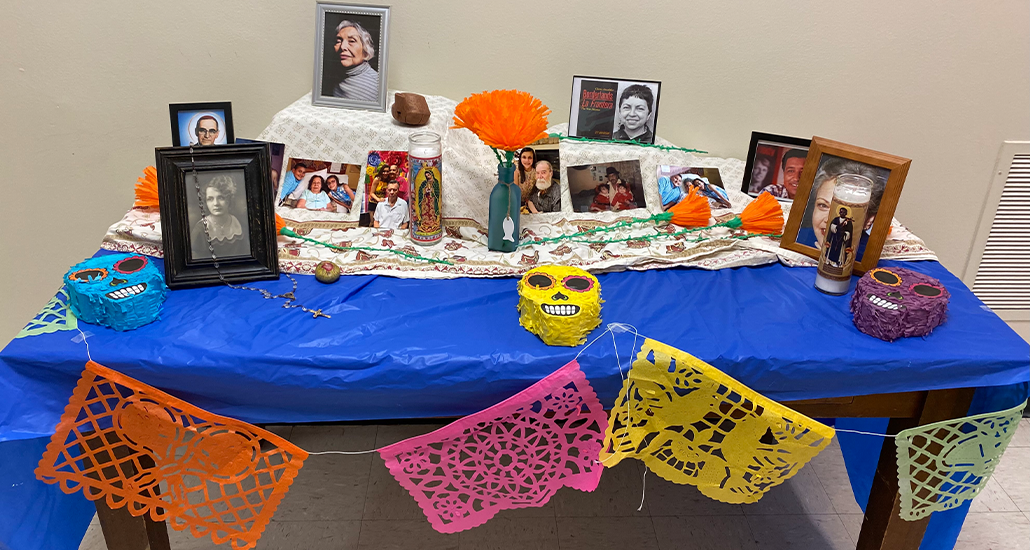Día de los Muertos Ofrenda
For many years, we have commemorated Día de los Muertos with a beautiful ofrenda near Our Lady's Chapel, decorated with symbols and signs of the season, skulls and skeletons (reminding us that death is just part of life), and most importantly, with pictures of those whom we wish to honor. These altarcitos, or “little altars,” are not only created to help us remember, but also to learn about and celebrate the lives of our family, friends, and mentors.
We will be setting up our 2023 community ofrenda in the hallway leading to Our Lady's Chapel on Wednesday, October 25. It will remain set up until Monday, November 20.
Below are some of the ofrendas that were created in 2022 from offices, departments, and schools that are part of our UIW family.
If you missed last year's All Souls' Day Memorial video, watch it here: 2022 All Souls' Day Mass Memorial Video.
Looking for ways to get involved? See below.
Here are ways to participate in our month-long time of remembering:
- Be part of our chapel community ofrenda! Share photographs of your deceased loved ones and friends on our community ofrenda outside Our Lady’s Chapel. Please include your name, cell phone and email on the back of each photo if you wish them to be returned.
- Sign our Book of Remembrance in the hallway near Our Lady’s Chapel. It will be set up on October 25.
- Share your ofrenda in our 2023 Pictorial Directory. If your office, department, or school will be setting up an ofrenda, take some pictures, and let us know – especially if yours is a “public” ofrenda that others can visit! We will be compiling a 2023 Pictorial Directory of these places of remembrance from our UIW campuses and Brainpower schools. All pictures should be sent to uiwmediaministry@uiwtx.edu by Monday, October 30 with “Ofrenda pictures from (your name)” in the subject line. (We invite you to view our 2021 Pictorial Directory if you did not have an opportunity to do so last year.)
- Spend some quiet time in Our Lady’s Chapel or a chapel/prayer space in your school.There is no better way to honor the memory of a loved one than through prayer. Pews will be available immediately near the ofrenda outside Our Lady’s Chapel.
- Attend our monthly community Memorial Mass. See our Community Memorial Mass page for a list of dates and to add the name of a recently deceased loved one, or one for which the anniversary of death is approaching.
If you are interested in building your own ofrenda but don’t know where to begin, here are a few helpful websites:
- Build Your Own Ofrenda By Renee Zamora
- Visit San Antonio – Día de los Muertos
- Texas Monthly: How to Build a Día de los Muertos Altar
Many people keep a small altarcito up year-round, so it’s never too late to set up a place to honor and remember your loved ones.
For more information, please contact Lena Gokelman or Carmen Aguilera at ministry@uiwtx.edu.
What is Día de los Muertos?
Neither Halloween nor the feast of All Saints evoke such a long popular response as does the feast of All Souls, El Día de los Difuntos, el Día de los Muertos (the Day of the Dead), on Nov. 2.
Devotion to Las Ánimas del Purgatorio (the holy souls in purgatory) has been part of the Hispanic piety over the centuries. In Texas, there is a remnant of an old pagan custom of bringing food to the dead for their journey. The custom has been Christianized with the blessing of the El Pan de Muertos (the bread of the dead): small loaves of sweet bread baked in the shape of human figures are presented with the gifts at Mass and blessed and distributed at the end of the celebration. Within some communities, Nov. 1 is the day to remember those who have died as children, while Nov. 2 is dedicated to remember the rest of family members, “our very own saints.” It was believed that on this date, God allowed the souls of the dead, especially those in Purgatory, to come back to earth to visit the places in which they had lived.
On the evening of Nov. 1, the families left the pan de muertos on the dinner table for the souls who might come to visit during the night. The “leftovers” of the meal of the souls were joyfully eaten by the family at breakfast on the following day. (The feast is much more elaborate in Mexico, where Calaveras (skulls), made of sugar or chocolate, are a popular buy for children, as well as los entierritos (a toy made with a shoebox, paper figures in a funeral procession that move entering into the box and coming out on the other side). The dead are not the object of fear and dread but are friendly ancestors who can sweeten the life of the living interceding for them with God.
Excerpt taken from: Mexican American Cultural Center. Faith Expressions of the Hispanics in the Southwest 3rd Edition. San Antonio: MACC, 2003
